Martina Minette Dreier – Female World
Text by Martina Minette Dreier
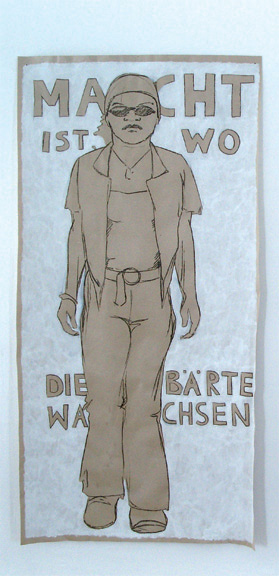 Identity, yearning, and power: these are the themes central to my work. Who am I? How do I want to be? How do others look at me? And how am I able to reach a destination yet unknown, towards which some indistinct yearning is pushing me? Who can help me find my way?
Identity, yearning, and power: these are the themes central to my work. Who am I? How do I want to be? How do others look at me? And how am I able to reach a destination yet unknown, towards which some indistinct yearning is pushing me? Who can help me find my way?
The importance of role models dawned on me one day as a I lay in front of the tv. I suddenly realized that I had been watching a soccer game for a full 10 minutes. For years I had tried in vain to develop enthusiasm for this game. So why was I interested now? It was women’s soccer, and there on the field were twenty two people with whom I could possibly identify. This seemed to make all the difference.
My interest in role models was aroused, and I was eager to discover more. For instance, a picture of Black Diamond, female leader of the rebels in Monrovia, surrounded by her female bodyguards. This, they told me, was another possible way to be female. This could be you.
By doing a big drawing of Black Diamond, a new idea unfolded: I could create my own universe of role models, of alpha females; my “Female World”.
Of course I needed female artists as role models, colleagues from all generations. Traditionally, art historians have focused far more on the work of male artists, but it is clear that there are many female artists as well! So, whenever I come across a picture of a female artist, I draw a little portrait of her, a star-postcard. These postcards form the series “My Ancestors”. For exhibitions, I arrange them as a sort of genealogical tree and include myself, intertwining myself into this constantly growing net.
Besides this tree, there are the godesses influencing the fate of the artists: the female curators, gallery owners, directors of museums, art critics, all drawn and collected in the series, “To Be Worshipped”.
Above: ‘Female World: Black Diamond’, 200×100 cm, by Martina Minette Dreier – The text in the background is a quotation by Moliere: ‘The power is where the beards grow’.
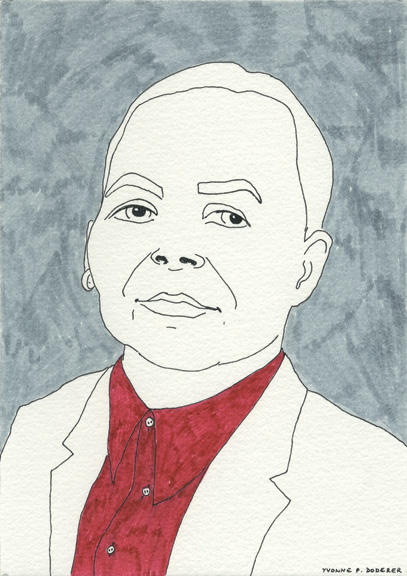
My Ancestors: Yvonne P. Doderer, drawing by Martina Minette Dreier
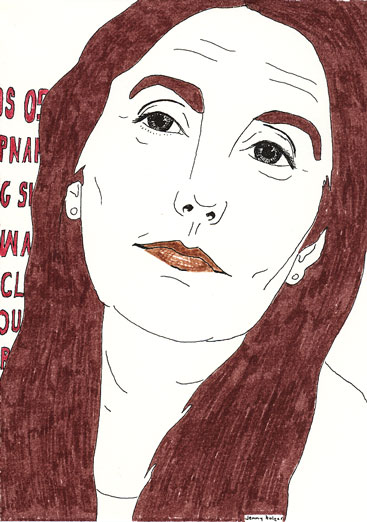
My Ancestors: Jenny Holzer, drawing by Martina Minette Dreier
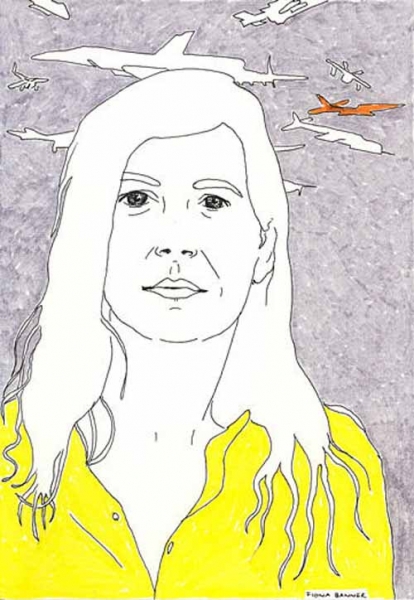
My Ancestors: Fiona Banner, drawing by Martina Minette Dreier
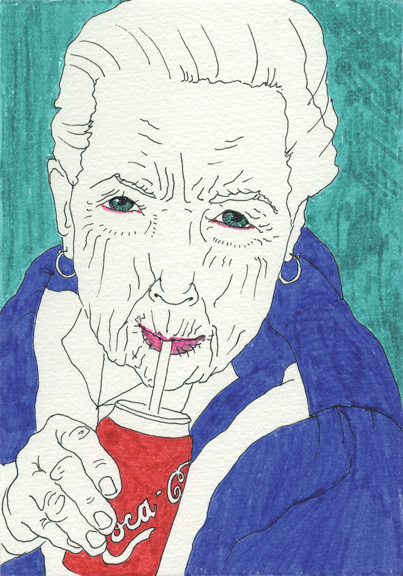
My Ancestors: Louise Bourgeoise, drawing by Martina Minette Dreier
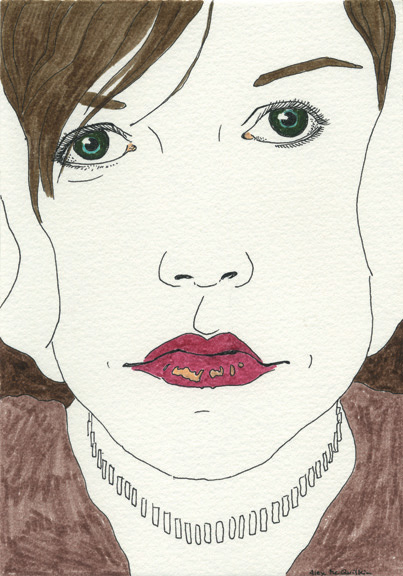
My Ancestors: Alex Mc Quilkin, drawing by Martina Minette Dreier
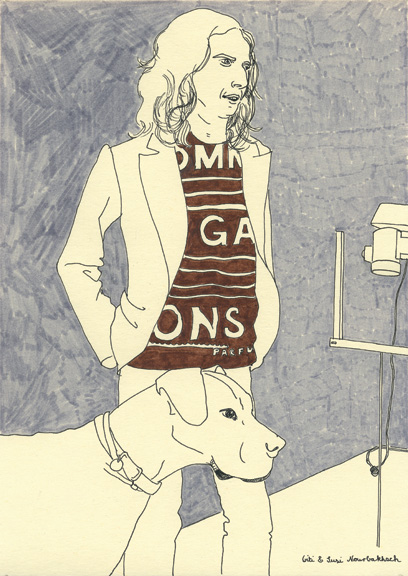
To Be Worshipped: Giti und Susi Nourbakhsch, drawing by Martina Minette Dreier
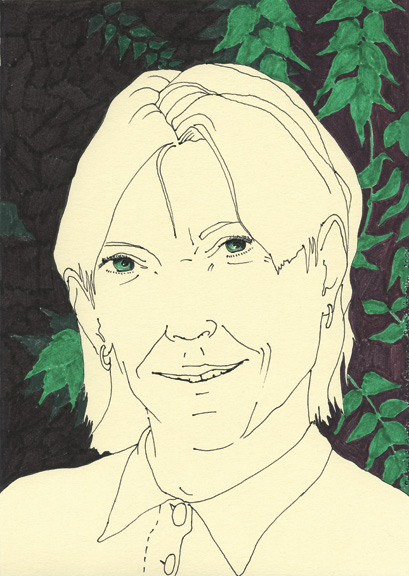
To Be Worshipped: Ingvild Goetz, drawing by Martina Minette Dreier
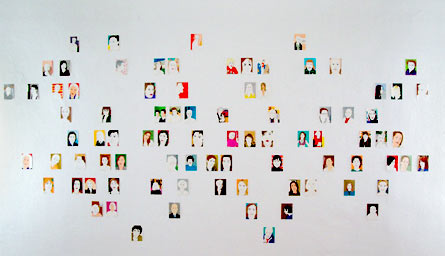
Installation view of ‘My Ancestors’ by Martina Minette Dreier in AREA 53, Vienna, Austria
About Martina Minette Dreier
Martina Minette Dreier is a German painter and queer woman. She has studied painting and illustration at Fachhochschule Bielefeld in 1988 – 1993 and she is now living and working in Berlin, Germany.
Related Links
Martina Minette Dreier’s websites: www.doinggender.de and www.minette.de